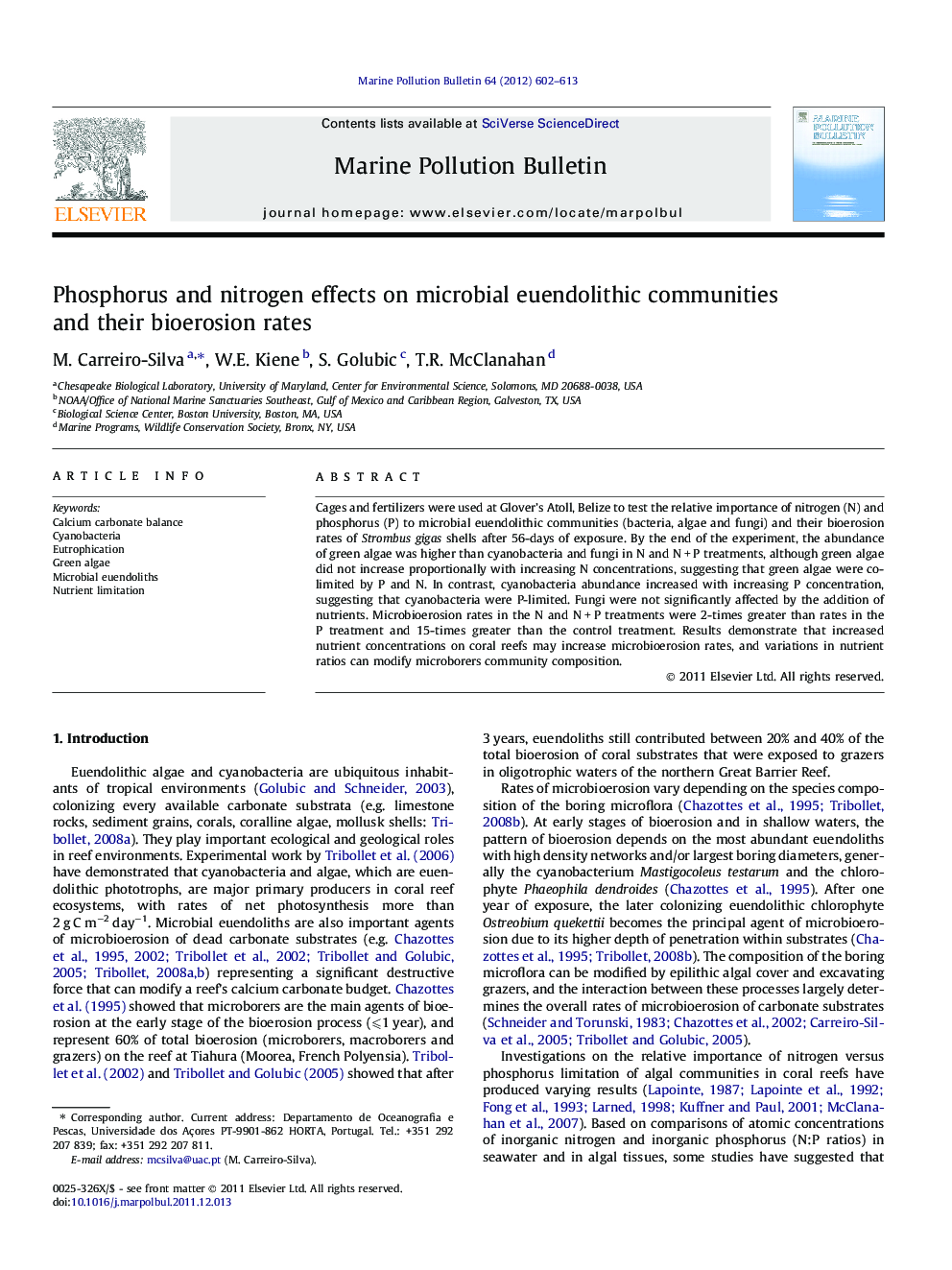| Article ID | Journal | Published Year | Pages | File Type |
|---|---|---|---|---|
| 6360504 | Marine Pollution Bulletin | 2012 | 12 Pages |
Cages and fertilizers were used at Glover's Atoll, Belize to test the relative importance of nitrogen (N) and phosphorus (P) to microbial euendolithic communities (bacteria, algae and fungi) and their bioerosion rates of Strombus gigas shells after 56-days of exposure. By the end of the experiment, the abundance of green algae was higher than cyanobacteria and fungi in N and NÂ +Â P treatments, although green algae did not increase proportionally with increasing N concentrations, suggesting that green algae were co-limited by P and N. In contrast, cyanobacteria abundance increased with increasing P concentration, suggesting that cyanobacteria were P-limited. Fungi were not significantly affected by the addition of nutrients. Microbioerosion rates in the N and NÂ +Â P treatments were 2-times greater than rates in the P treatment and 15-times greater than the control treatment. Results demonstrate that increased nutrient concentrations on coral reefs may increase microbioerosion rates, and variations in nutrient ratios can modify microborers community composition.
⺠We studied the effects of phosphorus and nitrogen on reef microboring communities. ⺠The addition of nitrogen alone and nitrogen and phosphorus favored green algae. ⺠The addition of phosphorus alone favored cyanobacteria. ⺠Elevated nutrients increased microbioerosion rates above control levels. ⺠High nutrients on coral reefs may increase microbioerosion rates of reef framework.
